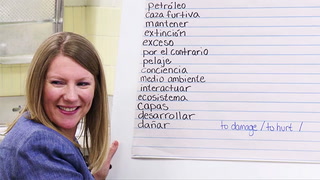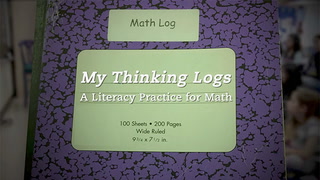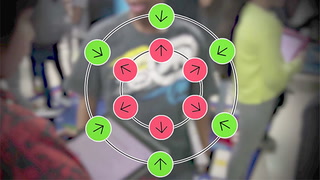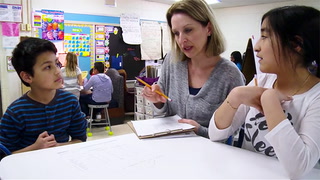Sharing Formative Assessment Notes Transcript
Speaker 1: So you've seen that they're related somehow.
Speaker 2: Yeah. So what I thought is that ...
Speaker 1: One of the formative assessment strategies that I use in my classroom is conferring notes.
Speaker 3: Where are you guys, right here?
Speaker 1: During our class, when our students are working with their small groups, my team teacher, Jessica, and I walk around and we make sure that students are getting to the point where we want them to get to with their strategies. We also take note of that.
It's a great way to explain things.
Rudolfo: [crosstalk 00:00:33] like, I want to say drawing or like a-
Speaker 1: Did you guys think about drawing a picture, trying to draw that out?
If somebody is using a strategy that we want to share during the whole group, we'll take note of that, so that we can call on them.
What is another strategy that you can show on your paper besides just showing that algorithm? Rudolfo?
Rudolfo: Pictures?
Speaker 1: Maybe you might want to show it with a picture. Okay?
If somebody's doing something that we think might be a misconception that other students are having, we will also take note of that, because we want them to bring that out so that we can talk about it and discuss it as a whole group.
How did you know that you had to divide this by four to get your rate here?
Speaker 5: Um, because if you do four times 30, you get 120.
Speaker 1: But how did you know that you were gonna multiply to get this?
Speaker 5: Wait, I have it. Because-
Speaker 1: Your friends can jump in.
Speaker 6: Yeah.
Speaker 1: Some of you were like, "I know how to do this. I've got it. I've got it." And we said, "Well, show us. How are you gonna show us?" That's hard, isn't it? It's hard to show your thinking in a way that other people can understand.
So after the class, Jessica and I take time and we look at them and we say, "Oh, this group is doing this," or "We noticed this," or "We noticed that." So that's when we really get time to sit down and plan and guide our lessons to make sure that all of our kids are where they need to be.
How many of you think that's a cognate?
Students: [crosstalk 00:01:55]
Speaker 1: Do we have a debate?
Students: Yes. Yes.
Students: No.
Speaker 1: So a lot of the conferring is not only to find out where the students are but also so that we can guide the large group instruction in a way that we know will be the most beneficial for all the students.
Speaker 3: All right, what are you guys thinking?
















8 Comments
LaBresha Small Mar 15, 2024 4:36pm
Joann Miller Mar 12, 2024 11:09am
Pairing the students in groups and having them share their ideas is a great learning experience. Students learn best when discussibng and sharing their ideas. I like how both teachers walked around the classroom getting ideas about what they needed to work on.
Elizabeth Polson Jul 7, 2022 4:24pm
How do you choose to pair the students? I've tried this before (and I'm a little different at the HS level), but I'm not very good at pairing students with those that REALLY need each other.
Sandra Towers-Halpin Sep 13, 2021 11:33am
I actually would like more context here. I wish there was more explanation of what the teachers are looking for.
On another note...I love the different places for students to sit and work! Very inviting!
Cornelio Ancheta Mar 30, 2018 6:31pm